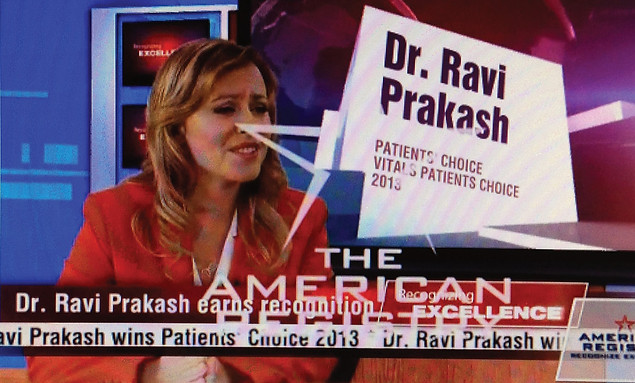

Dr. Prakash has Over 20 Years of Experience
Five Star Rating for outstanding service.
Resident Internal Medicine- New York Medical College
New York, NY
Fellow Cardiology-Cedars Sinai Medical Center
Los Angeles, CA
Formerly Chief of Cardiology
at the University of California Irvine School of Medicine (UCI)
&
Professor of Medicine
at the University of California Los Angeles School of Medicine (UCLA)
Doctor PRAKASH has been honored for Excellence
by the Patient's Choice Award in the USA,
by Vitals as the Most Compassionate Doctor in America
and America's top Physician by Consumers Research Council of America
Insurance accepted: Medicare, All PPO plans like Blue Cross, Blue Shield, United Health Care, etc.
Member of Regal IPA, Accountable IPA, Alignment IPA.
Phone Number: (310) 214-5433
4305 Torrance Blvd. Suite #405, Torrance, CA 90503, USA


Heart attack is the number ONE killer of both men and women in the U.S. each year, about 1.1 million Americans suffer a heart attack of which 460,000 are dead.
High Blood Pressure, Cholesterol, Diabetes, Obesity, and Stress are silent killers and cause Heart Attack, Stroke and Early Death.
These diseases can be in your body even if you are lean, feel well, eat well and exercise.
HEART ATTACK SYMPTOMS
1. Chest pain, fullness or squeezing sensation in the chest
2. Jaw pain or toothache
3. Headache or lightheadedness
4. Short of breath with or without chest discomfort
5. Breaking out in a cold sweat
6. Nausea or vomiting or abdomen discomfort or heart burn and/or indigestion
7. Arm pain, left arm or either arm, or upper back pain
8. General malaise or feeling of illness
9. Or no symptoms, one quarter of heart attacks are silent, without chest pain especially in diabetic patients
CHEST PAIN
Severe, sudden chest pain — especially if it accompanied by pain in the left upper arm, sweating and nausea, or severe shortness of breath — requires immediate medical attention, as it may indicate a heart attack. Chronic chest pain can arise from many causes, including angina, hiatal hernia, gallbladder disease, ulcers, and chronic bronchitis.
WHAT CAUSES CHEST PAIN?
Coronary Artery Disease, or CAD is a blockage in the heart blood vessels that reduces blood flow and oxygen to the heart muscle itself and may cause a myocardial infarction (heart attack).

PROCEDURES

DUAL ISOTOPE, REST/STRESS SPECT MPI
INCLUDING PRESANTINE STRESS GATED SPECT IMAGING
A dual isotope stress test is a nuclear medicine study that is ordered by your doctor. This test helps your doctor in determining if you have a blockage in one or more of the arteries around your heart.
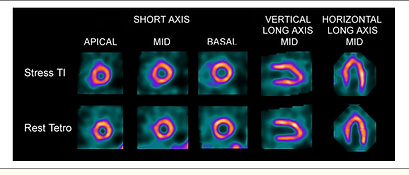
TESTS
EKG
EKG measures your heart's electrical activity and can assess heart damage/disease.
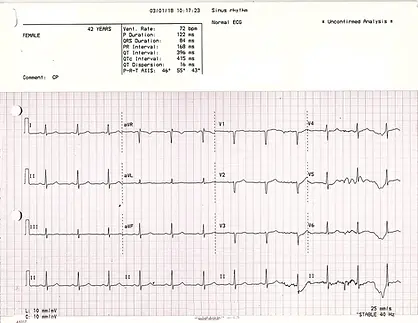
HOLTER EKG
A Holter Monitor is small like a mobile phone, which detect & record all heart rhythms over a 24 hour period – usually 100,000 heart beats in a day! An EKG looks at only 50 beats at that moment it is done. But your heart’s rhythm can change over the day & night without you feeling any dangerous changes which could cause DEATH DURING SLEEP. Holter can detect the cause of FAINTING, DIZZINESS & PALPITATIONS & detects SKIPPED BEATS and FIBRILLATION. Checking your heartbeat day, night & reregular activities.can save your life.
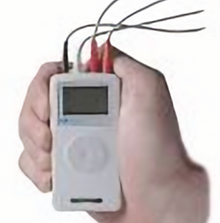
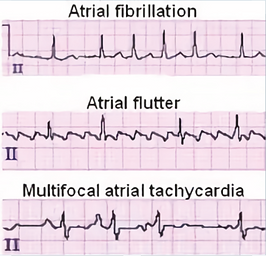


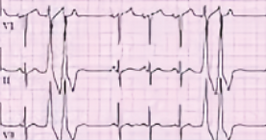
TREADMILL STRESS TEST
This helps to find out how well your heart handles work. As your body works harder during the test, it requires more oxygen, so the heart must pump more blood. It may show if the blood supply is reduced in the arteries that supply the heart, but it does not detect blockage in the coronary arteries. It helps know the kind & level of exercise appropriate for you & find cause of chest pain, shortness of breath, dizziness & to detect abnormal heart rhythms (arrhythmias).

ECHOCARDIOGRAPHY
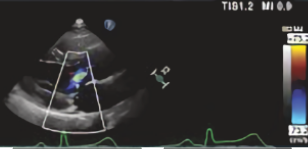
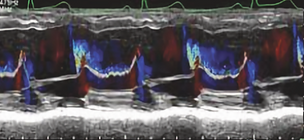
Echocardiogram is a noninvasive (the skin is not pierced) test to assess the heart's function. It measures the heart's size & functioning of the valves.
Color Doppler measures the flow of blood through the heart's chambers & valves.
An echo is used in patients with High Blood Pressure, Heart Failure, Palpitations, Dizziness, Fatigue, Shortness of Breath & Tumor In the Heart.
Echo can detect silent heart diseases and to grade exercise tolerance in healthy people.
CARDIAC CATHETERIZATION & CORONARY ANGIOGRAPHY


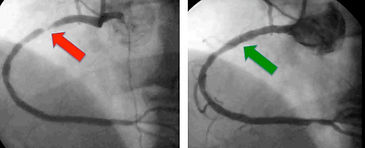
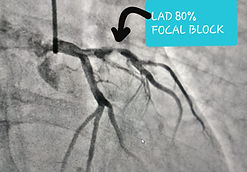

Coronary angiography is a procedure that uses a special dye (contrast material) and x-rays to see how blood flows through the arteries in your heart. Coronary angiography is performed to detect obstruction in the coronary arteries of the heart.
CORONARY ANGIOPLASTY
The Angioplasty also called percutaneous coronary intervention, is a procedure used to open clogged heart arteries. Angioplasty uses a tiny balloon catheter that is inserted in a blocked blood vessel to help widen it and improve blood flow to the heart.
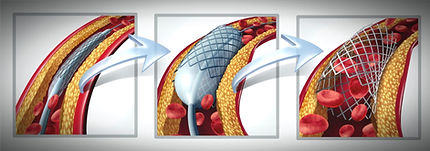
CORONARY CT ANGIOGRAPHY
The coronary CT angiogram is a computerized tomography imaging test that looks at the arteries that supply blood to the heart. A CT coronary angiogram uses a powerful X-ray machine to produce images of the heart and its blood vessels. The test is used to diagnose a variety of heart conditions.
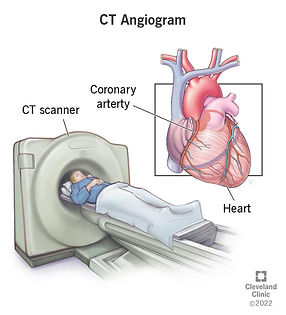

CORONARY ARTERY BYPASS SURGERY
The Coronary Artery Bypass Surgery is a medical procedure to improve blood flow to the heart. It may be needed when the arteries supplying blood to the heart, called coronary arteries, are narrowed or blocked.


PREVENTION

NO SMOKING
Smoking reduces oxygen in your blood and increases plaque build-up.
WHAT CAN YOU DO?
When it comes to heart disease prevention, no amount of smoking is safe. The more you smoke, the greater your risk. Smokeless tobacco, low-tar and low-nicotine cigarettes, and secondhand smoke also can be a risk. Even so-called "social smoking" — smoking only while at a bar or restaurant with friends — can be dangerous and increase the risk of heart disease.
IMPROVE HIGH BLOOD PRESSURE
Your heart works harder to pump the same amount of blood, straining your arteries and making plaque build-up more likely.
WHAT CAN YOU DO?
Eating a healthy diet can reduce your risk of heart disease. Two examples of heart-healthy food plans include the Dietary Approaches to Stop Hypertension (DASH) eating plan and the Mediterranean diet. A diet rich in fruits, vegetables and whole grains can help protect your heart. Aim to eat beans, low-fat or fat-free dairy products, lean meats, and fish as part of a healthy diet. Avoid too much salt and sugars in your diet.
MONITOR FOR DIABETES
Diabetes can damage your blood vessels and raise your blood cholesterol levels
WHAT CAN YOU DO?
Since diabetes is a risk factor for developing heart disease, you may want to consider being screened for diabetes. Talk to your doctor about when you should have a fasting blood sugar test or hemoglobin A1C test to check for diabetes.

WEIGHT LOSS

BEING OVERWEIGHT,
HEART DISEASE,
HIGH BLOOD PRESSURE,
HIGH CHOLESTEROL,
STRESS AND
DIABETES?
WHY IS IT HARD TO LOSE WEIGHT &
WHAT IS THE REASON FOR BEING OVERWEIGHT?
The urge to eat too much is wired into our heads. Tackling obesity may require bypassing the stomach and short-circuiting our brains.
The brain's prime directive to eat and defend against the loss of fat emerged early in evolution.
Brains of the overweight are wired to feel more pleasure in response to food.
WE ARE ALL CREATURES OF HABIT
You have resolved to change your eating habits and you mean it.
Sometimes you succeed but often fail. Why? Not because you're not working hard to change.
You did not succeed because, simply put, habits are extremely hard to change.
They're hard to change because they're so ingrained, because they're so almost-automatic.
Our minds don't always integrate in the best way possible. Even when you know the right answer, you can't make yourself change the habitual behavior.
This process engages the basal ganglia, or the part of the brain located in the pre-frontal cortex that works to start and control movement and emotions. Good habits help us through our day.
The reward, is the brain’s own personal cue for when it should recall the automatic behavior.
This cue trigger signals to your brain to turn a behavior into an automatic routine like eating potato chips, cookies, cheese and other weight gaining items.
IMPROVE NUTRITION
EAT HEART-HEALTHY FOOD
Changing the way you eat can reduce many of your risk factors. It can lower your cholesterol, blood pressure and weight. Your diet doesn't have to be bland and boring to be healthy. Just follow these steps: Eat less fat and salt, and eat more fiber. Your whole family can benefit from healthy eating habits.
EXERCISE FOR A HEALTHY HEART
Like any muscle, your heart performs better with regular exercise. Exercising also reduces stress, lowers blood cholesterol, helps control diabetes, and helps you lose weight. Before you start, talk with your doctor to make sure the exercise you plan is right for you.
Choose a nonstop activity that makes your heart and lungs work harder than they do when you rest or walk normally. This aerobic exercise can improve they way your heart and other muscles use oxygen. Make it fun by exercising with a friend and choosing an activity you enjoy. Here are some ideas:
Walking
Swimming
Bicycling
Stair Climbing
Dancing
Jogging
AYURVEDA
Ayurveda in herbal supplements originated in India 5000 years ago and are recorded in VEDAS (3000BC) in Sanskrit. Popular in India, Bangladesh, Sri Lanka, China, Tibet, Nepal, Asia and known in Europe and other parts of the world.
In the USA Ayurveda is considered Alternative Medicine and has grown in the past decade, partly due to the work of Deepak Chopra M.D., a physician who combines Western Medicine with Ayurveda.
Ayurveda aims to integrate & balance the body's constitution (prakriti) & life forces (dashas) to achieve good health, harmony and happiness in Life. Maximal benefits require changes in Diet, Life Style and Habits with intake of Herbal dietary supplements.
Herbs are at the heart of Ayurvedic supplements and medication. Whole flowers, roots, stems and leaves are manually processed in various ways to discover their optimal potential. Over 15,000 herbs are mentioned in the scriptures that grow in the HIMALAYAN mountains, of which only around 850 are commonly used in Ayurvedic supplements today.
SLIMLY
AYURVEDIC ORGANIC DIETARY HERBAL SUPPLEMENT FOR WEIGHT LOSS
Ayurveda originated in India 5000 years ago and is popular in CHINA, ASIA and EUROPE. In the USA, Ayurveda is recommended by Dr. Oz in his TV show and by Dr. Deepak Chopra at his Center located at the La Costa Resort and Spa in Carlsbad, California. Dr. CHOPRA was seen in the Oprah TV show and is the author of "Grow Younger and Live Longer" and many other Medical Books.
TESTIMONIAL




STRESS

PROS AND CONS
By definition, stress is any uncomfortable emotional experiences accompanied by predictable biochemical, physiological and behavioral changes.
Some stress can be beneficial at times, producing a boost that provides the drive and energy to help people get through situations like exams or work deadlines. However, an extreme amount of stress can have health consequences.
SIGNS OF STRESS
Worries,
Fatigue,
Trembling,
Restlessness,
Fear of being left alone,
Difficulty in falling asleep or Broken Sleep,
Fatigue on waking,
Nightmares,
Difficulty in Concentration,
Lack of pleasure in Hobbies,
Rapid Respiration,
Hot and Cold Flushes,
Palpitations,
Choking Feelings,
Sighing,
Constipation,
Frequency of Micturition,
Dry Mouth,
Headache,
Grinding Teeth
SIGNS OF DEPRESSION
Takes longer than 30 minutes to fall asleep,
restless sleep,
wake up, difficult to go back to sleep
awakening at least one hour before you need to, and
can not go back to sleep,
sleeping longer than 10 hours,
feeling sad
decrease appetite or increase appetite
loss of weight or increasing weight within the last 2 weeks of 2 pounds or more,
difficulty in concentrating,
difficult to make decisions,
more self-blaming than usual,
feeling as if life is empty or wonder
if it is worth living,
losing interest in people or activities/hobbies,
feeling tiredor sleepy,
difficulty to carry out usual daily activities,
feeling slowed down or restless.
FATIGUE
There are numerous potential causes of fatigue as a major complaint. They range from those that cause poor blood supply to the body's tissues to illnesses that affect metabolism, from infections and inflammatory diseases to those that cause sleep disturbances. Fatigue is a common side effect of many medications. While numerous patients with psychological conditions often complain of fatigue (physical and mental), there are also a group of patients where the cause of fatigue is never diagnosed.
CAN FATIGUE BE PREVENTED?
Fatigue as a symptom can occur as the result of many causes and therefore, prevention is not an issue. More importantly, the early recognition of fatigue will allow a person to seek medical care and potentially have an earlier diagnosis of the underlying cause made.
Sometimes, symptoms like fatigue arise gradually and it is difficult for the person to realize that there is a problem. It may take an outside perspective from a friend or family member to appreciate a difference in function. Self-awareness of gradual decline in body performance is often difficult as a person makes repeated small accommodations to complete daily activities.

FEATURES:

